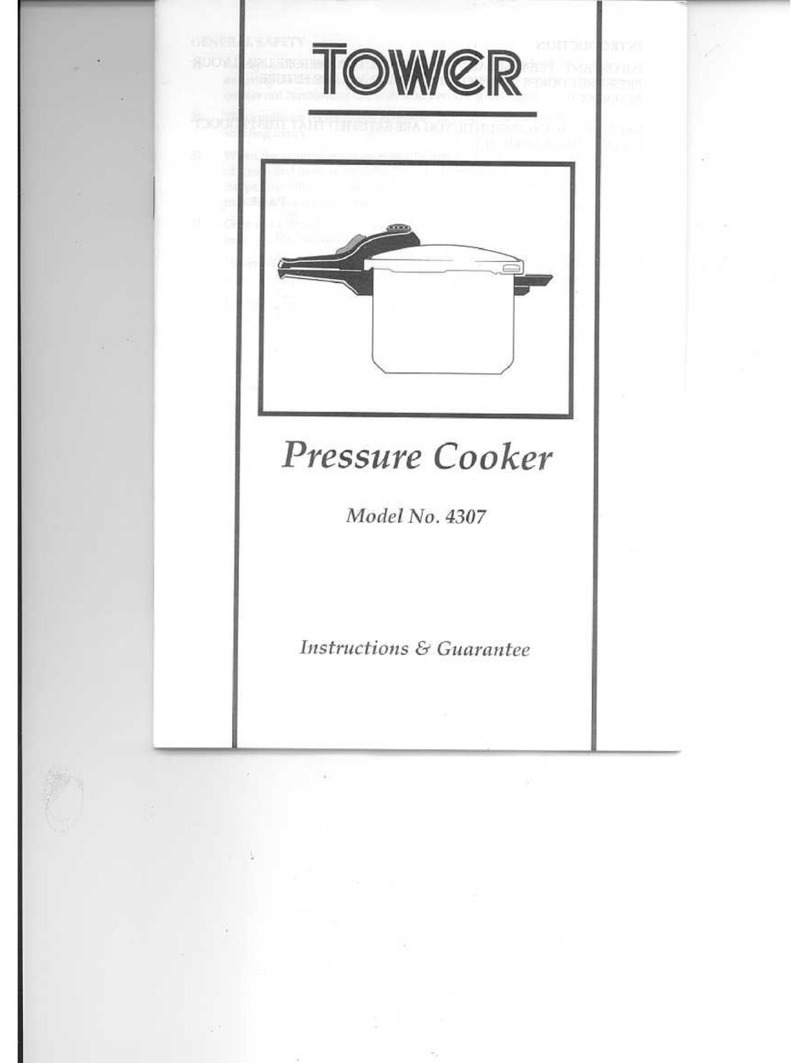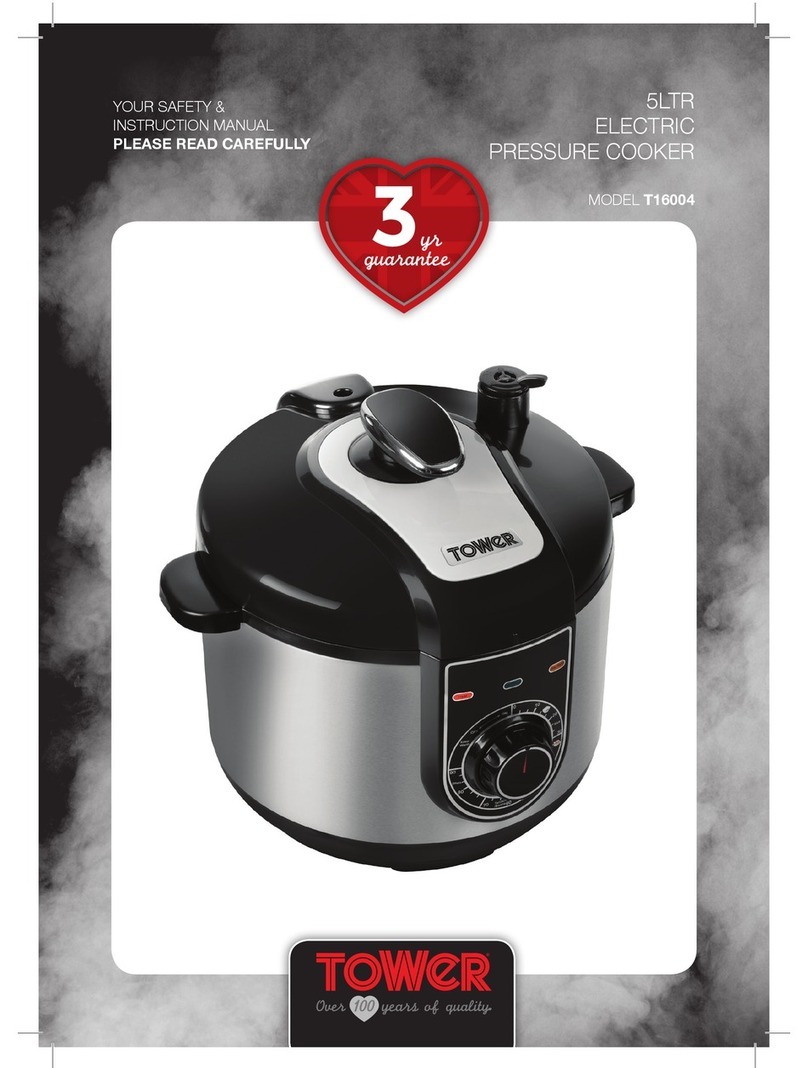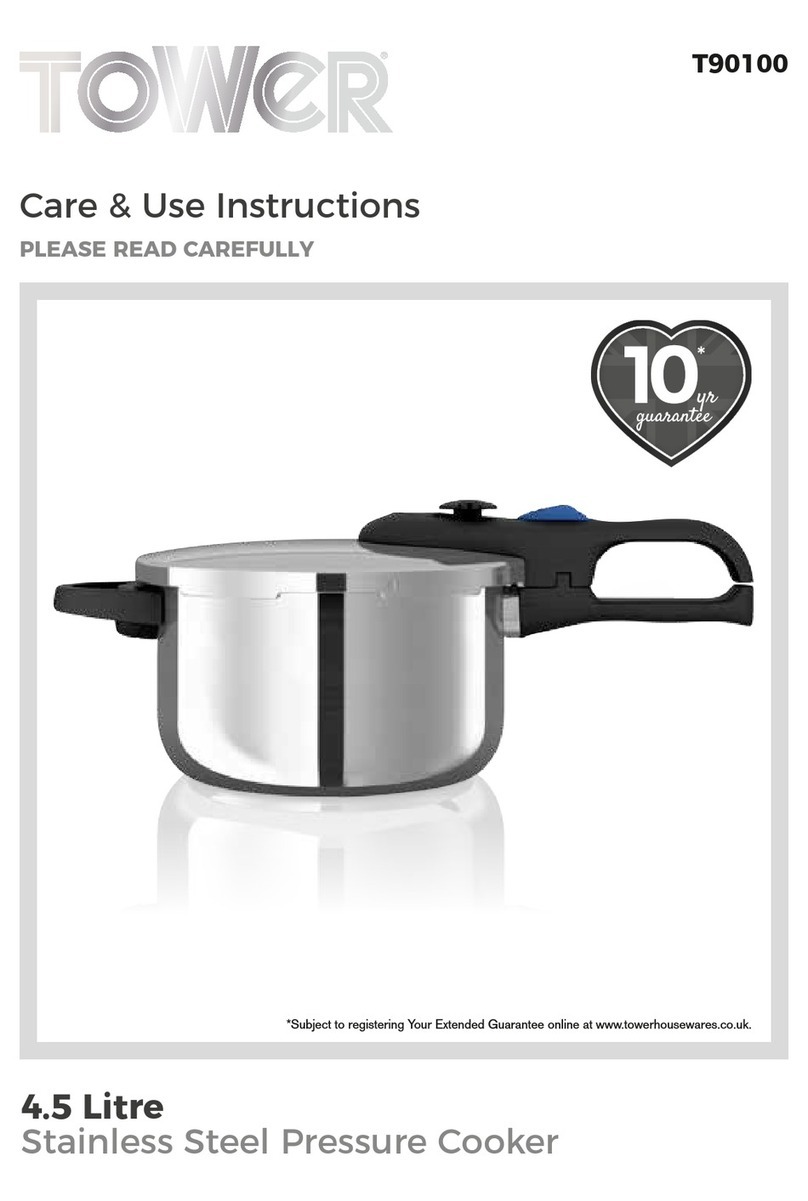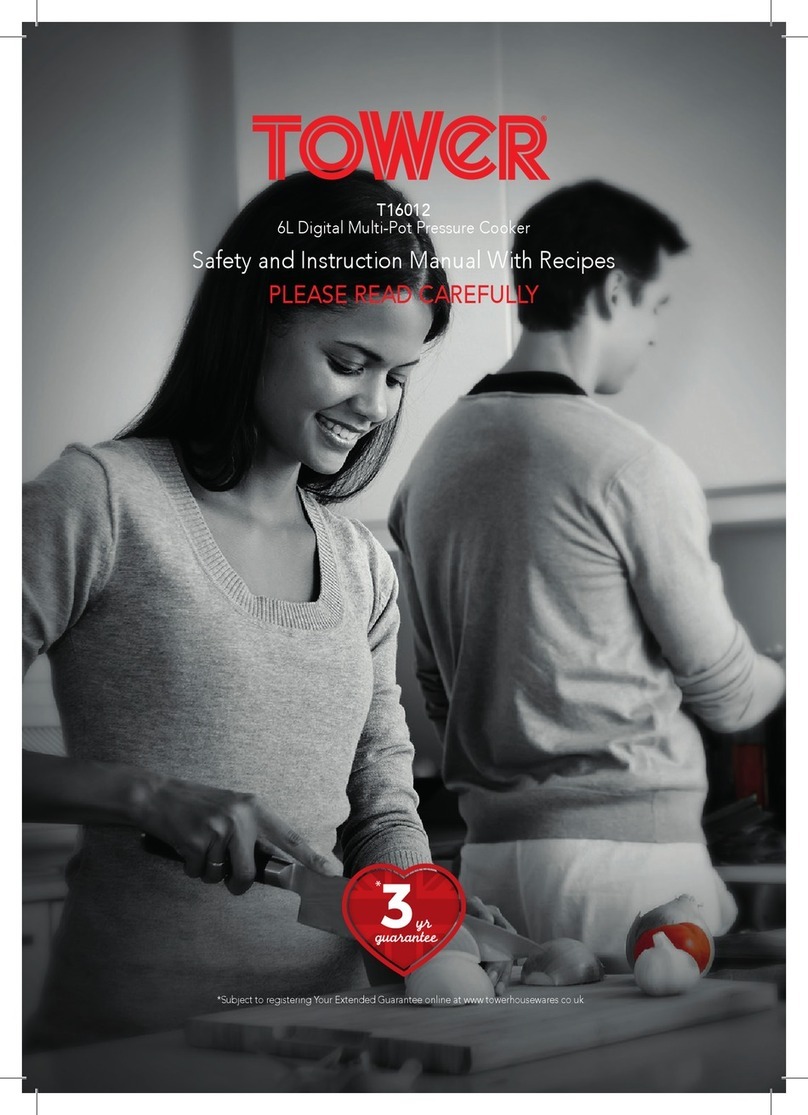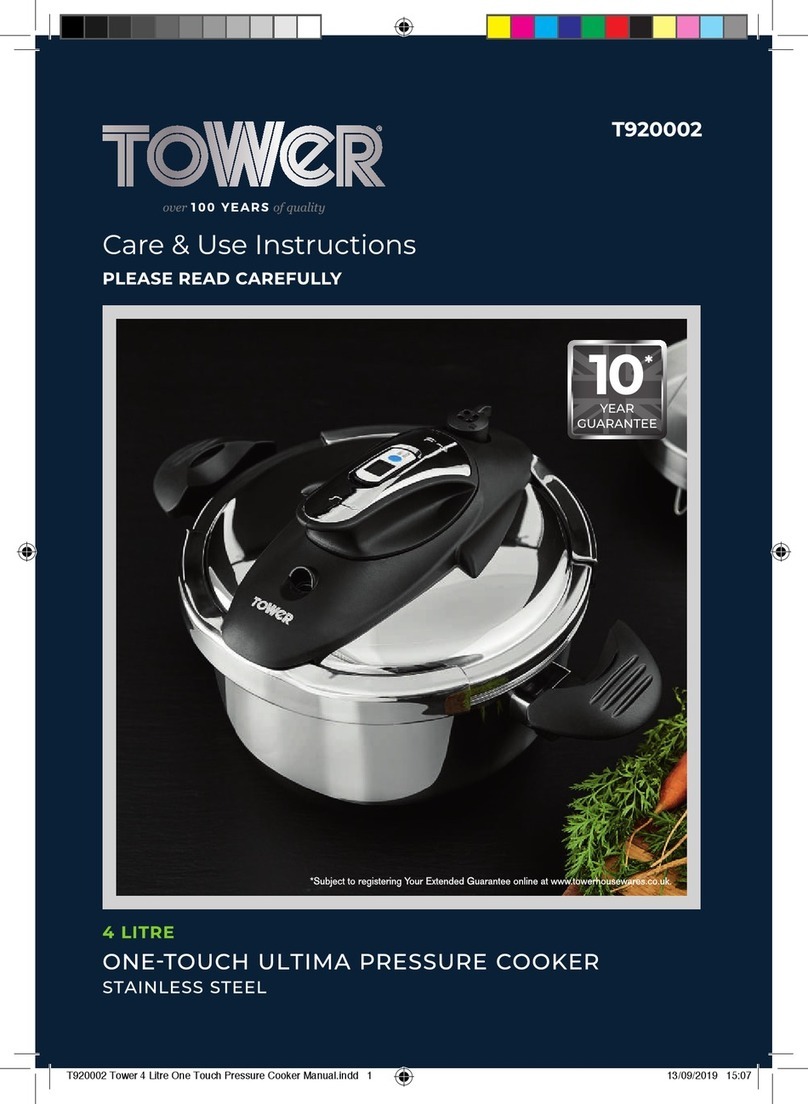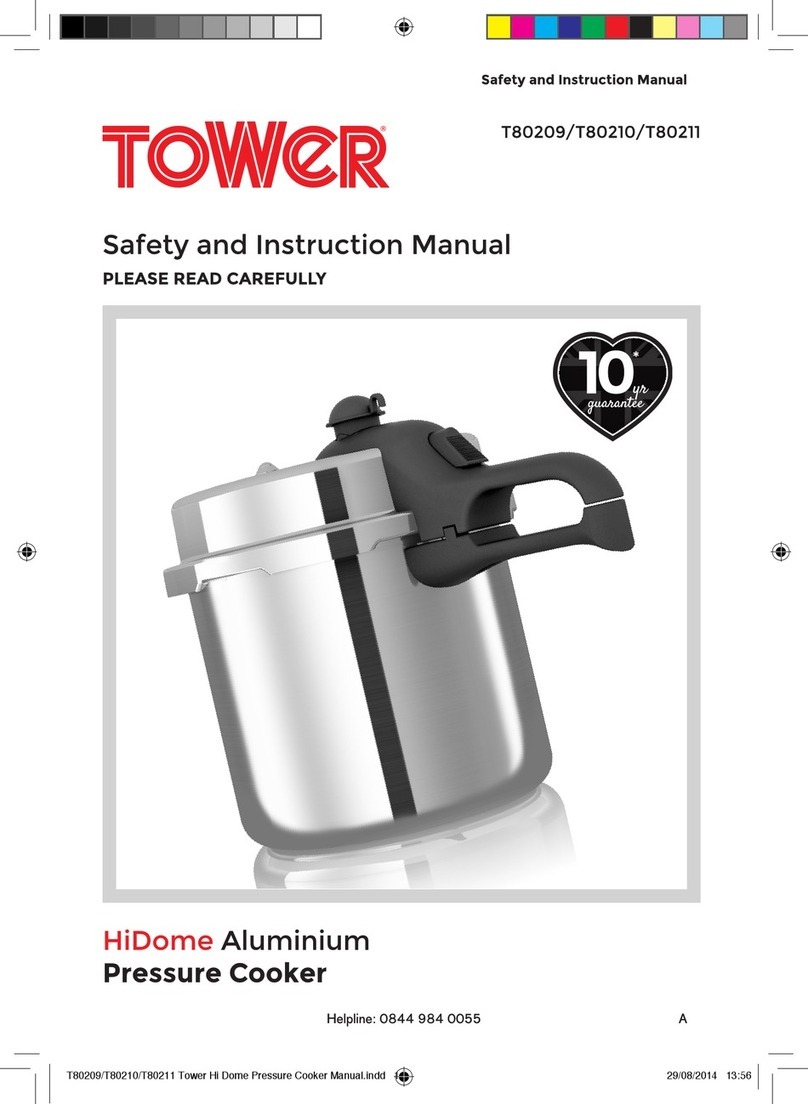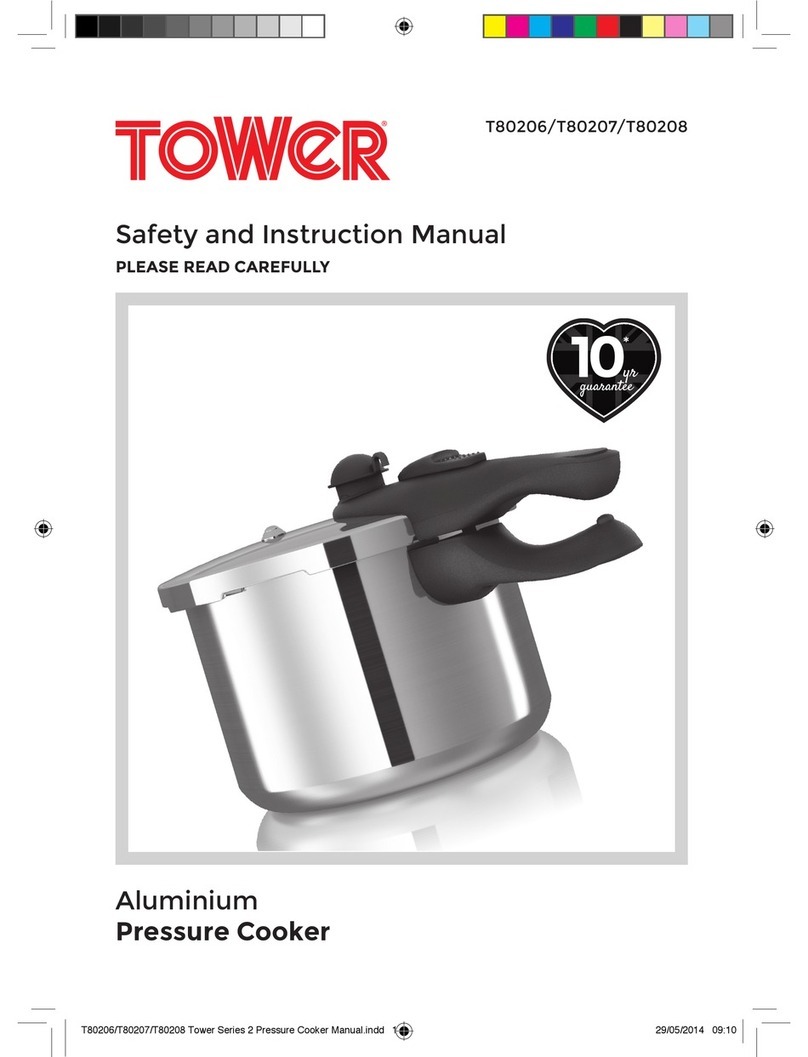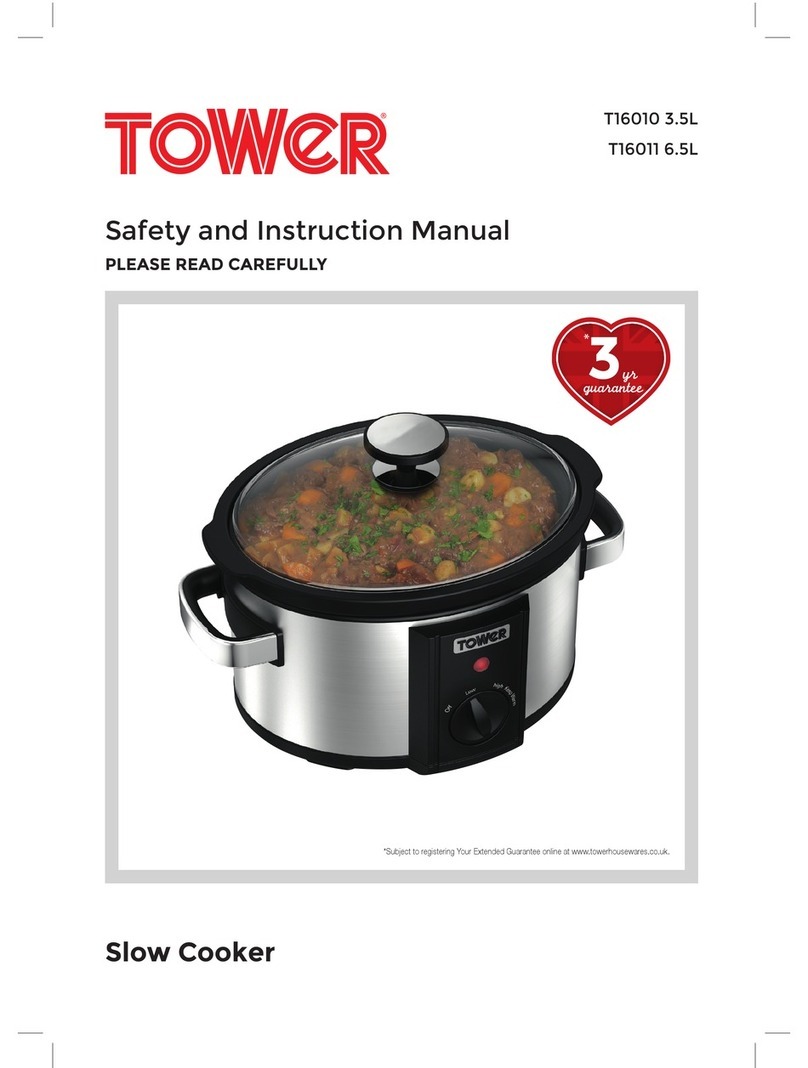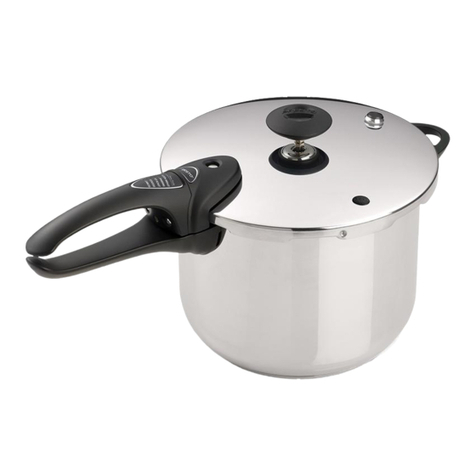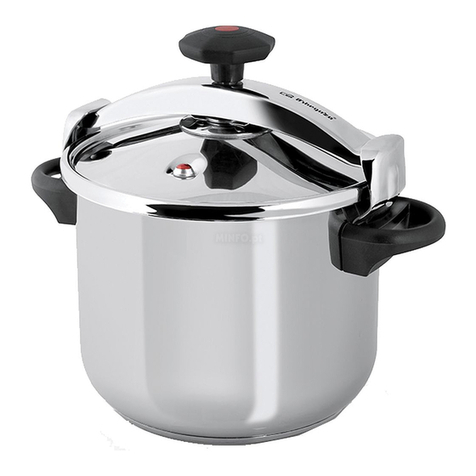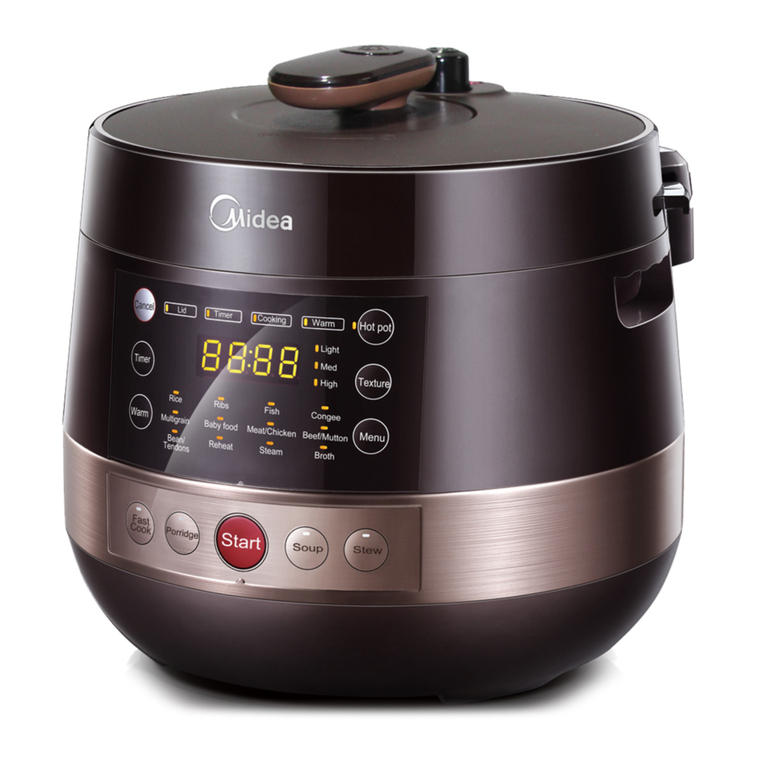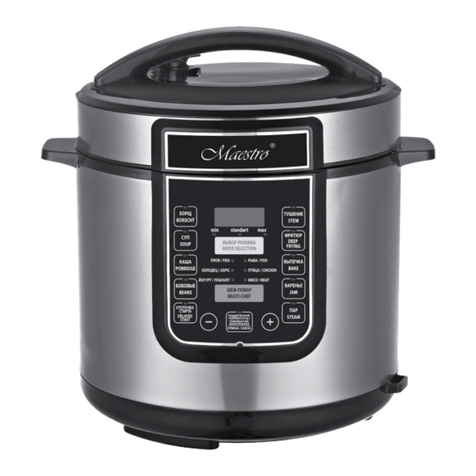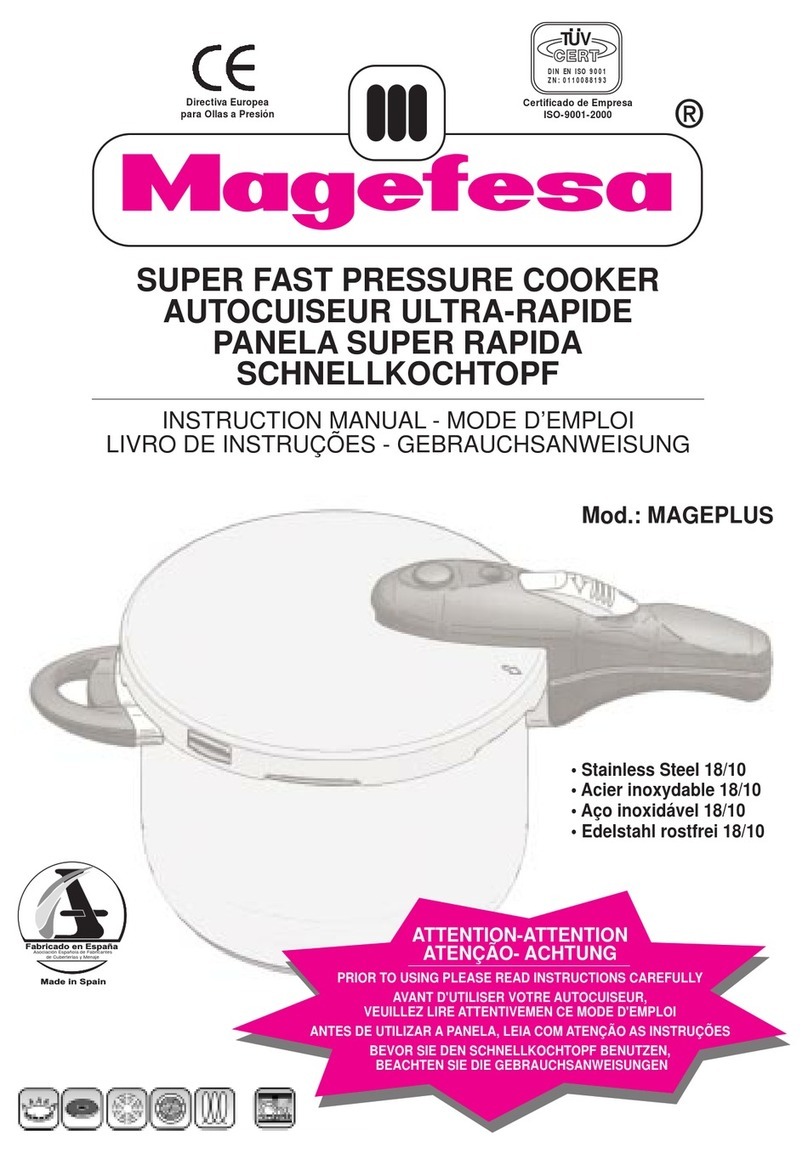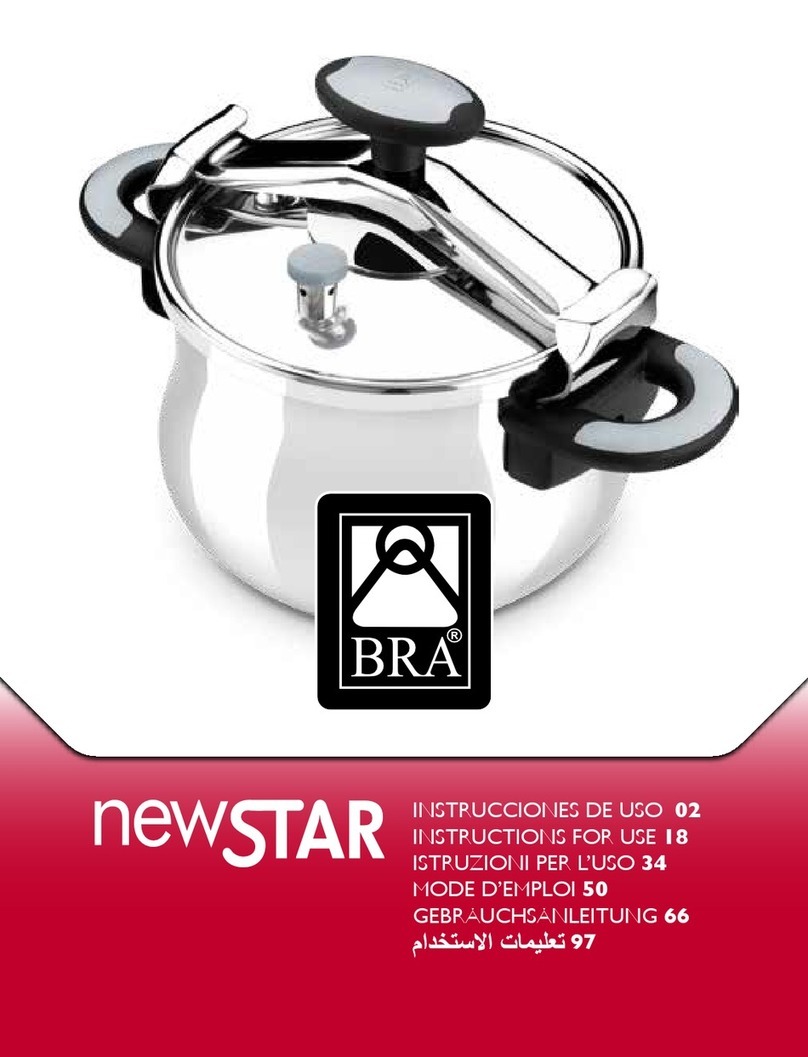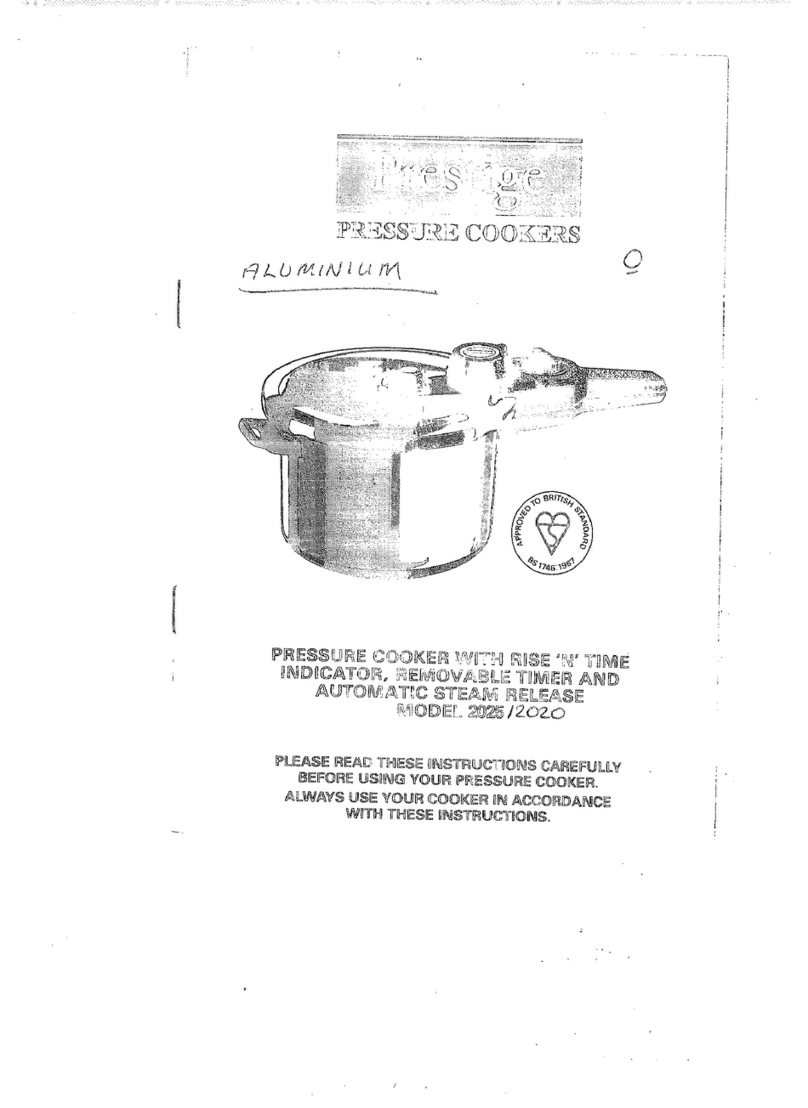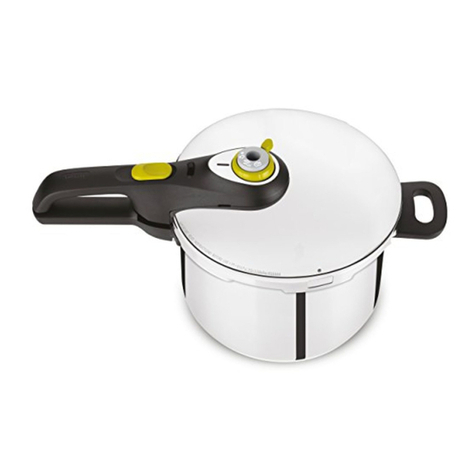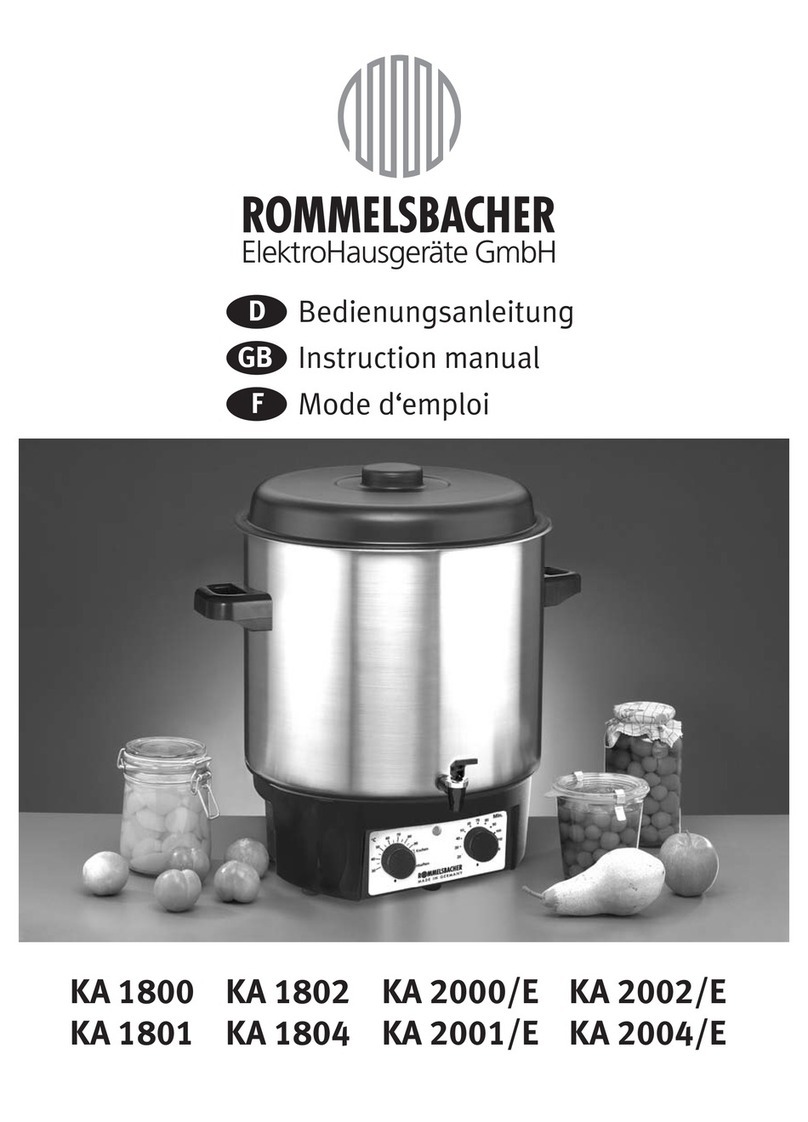
2
1912 Midland Metal Spinners
was founded by George
Cadman, who was then
65 years old, as a metal
holloware manufacturing
company, in St. Mark’s Street,
Wolverhampton. They later
moved into the Tower and
Fort Works in Pelham Street,
which ultimately gave rise
to the famous Tower brand
name.
1937 Tower exhibited some
of their latest holloware
designs at the British
Industries Fair. As you can
see from the original poster,
their stand No. A410 must
have been a great sight as
it promoted their “Beautiful,
inexpensive, untarnishable
Plate, at prices all can afford
to pay”.
1961 Tower became one of
the largest manufacturers of
aluminium holloware, electric
kettles, tea pots and other
household articles with over
1,000 employees.
1974 Russell Hobbs took
ownership of the expanding
Tower brand.
Join the pressure cooker revolution
Tower pressure cookers cook
foods in about a third of the
time, preserve 95 per cent of
the vitamins, use almost 90
per cent less fuel and lock
in all the avour. Use your
Electric Pressure Cooker with
its non-stick pot to brown,
boil, steam, braise, stew and
roast. Perfect for vegetables,
meat, fruits, sh and grains.
Pressure cooking is the
process of cooking food,
using water or other cooking
liquid, in a sealed vessel
known as a pressure cooker.
Pressure cookers help to
seal all nutrients in the
food and save energy by
cooking up to 3 times faster
than conventional cooking
methods.
Pressure cookers heat
food quickly because the
internal steam pressure
from the boiling liquid
causes saturated steam (or
“wet steam”) to bombard
and cook the food. They
quickly simulate the effects
of simmering, braising and
other techniques. Two main
things happen with high
pressure steam - the boiling
point of the water in the pot
raises which in turn cooks
food faster and the pressure
raises, forcing liquid into
the food. When liquid and
moisture is forced into the
food quickly, not only does it
cook the food faster, it also
helps improve the cooking of
certain foods, such as making
meat very tender.
In conventional cooking,
water boils at 100° at
standard pressure and the
water evaporates as steam.
In a pressure cooker, the
trapped steam causes the
internal temperature and
pressure to rise resulting in
superheated water. After
use, the pressure is slowly
released so that the vessel
can be safely opened.


